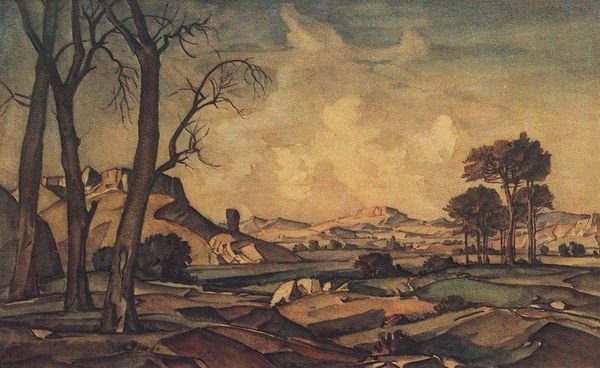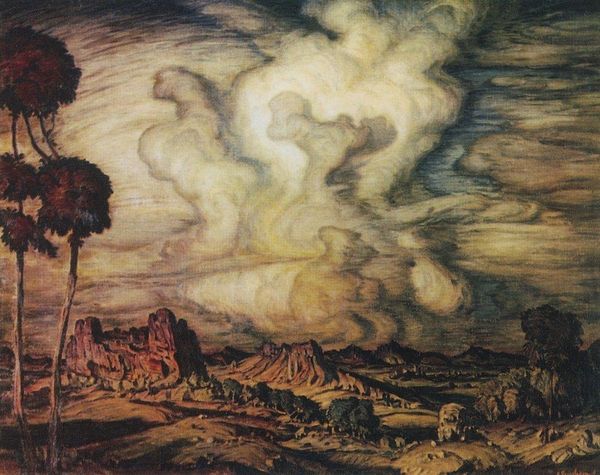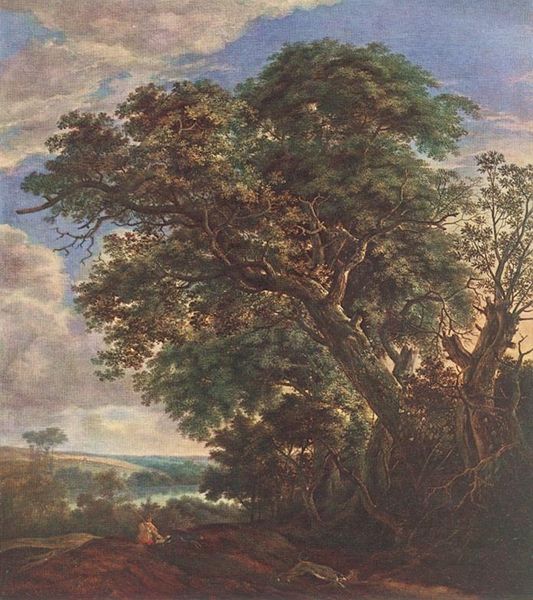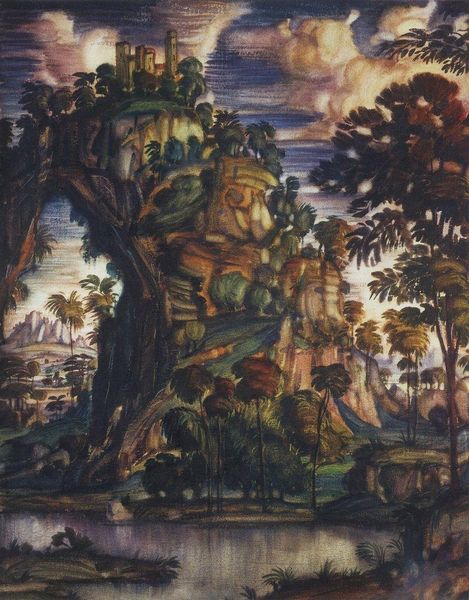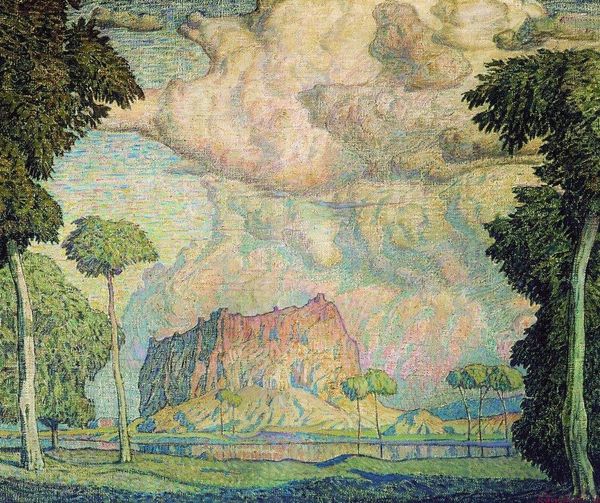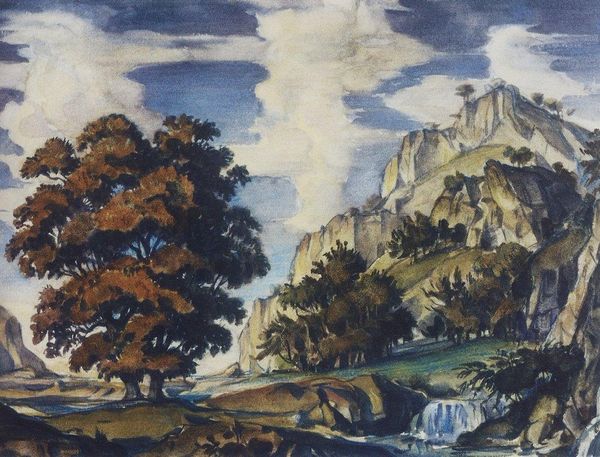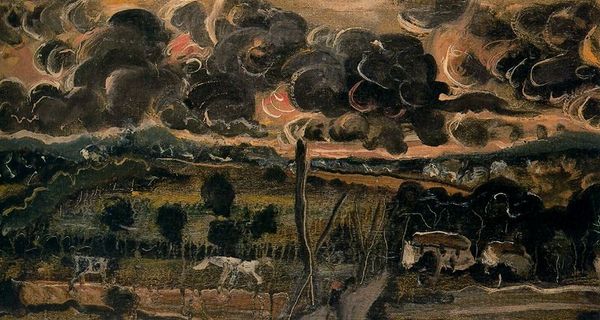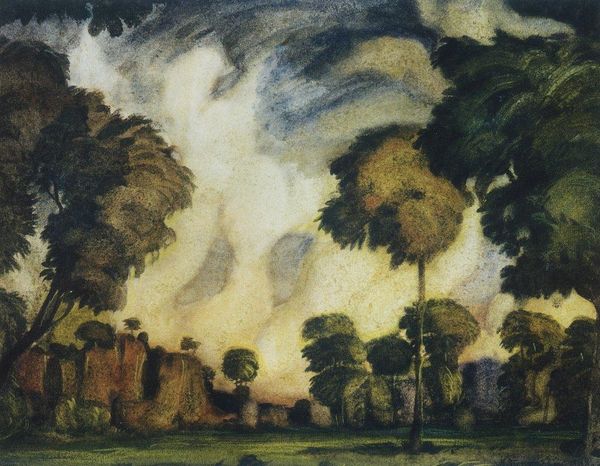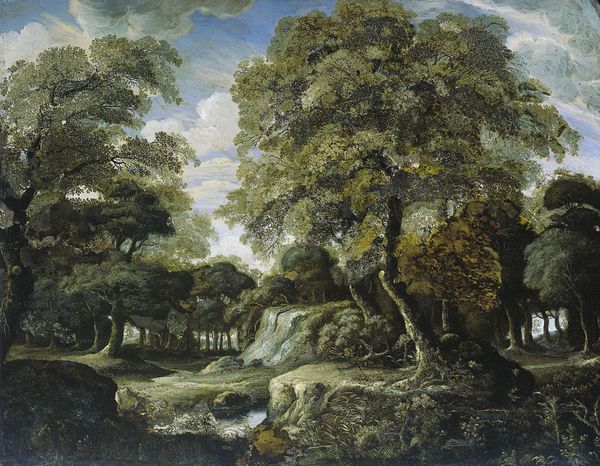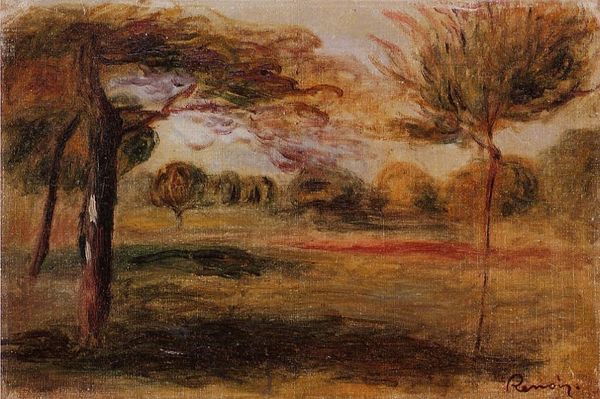
Copyright: Public domain
Curator: Allow me to introduce "Landscape with Rocks. Stary Krym," painted by Konstantin Bogaevsky in 1908. The artwork, crafted with oil paints, beautifully marries elements of romanticism, realism, and even hints of impressionism within its style. Editor: It evokes a strong sense of place and nostalgia; there's a very deliberate weight in those strokes. I can almost feel the impasto from here. Is that canvas or board? Curator: From what I have understood, it is canvas, although prepared to emulate a rougher, perhaps even board-like texture. Notice how the application method and choice of pigment work in tandem. See the ways he plays with depth by varying these choices in different locations throughout the scene. Editor: Indeed, the texture manipulates the light. This rugged terrain, these seemingly wind-beaten trees... What can you tell me about the physical reality that influenced this image? What do we know of the paint itself? What kind of labour went into this? Curator: What's most fascinating, formally, is Bogaevsky's treatment of the sky. See the swirling clouds echoing the rock formations below, almost mirroring each other to compress pictorial space and to create a certain atmospheric unity. Editor: Yet that unification also serves a function. It speaks of interconnectedness, not merely as pictorial strategy, but an awareness perhaps of natural processes at work on the land itself. Do we know anything about Bogaevsky’s process? What supports did he typically favour for his painting, and what pigments did he use, or where he sourced his material from? Curator: Historical accounts point to him sourcing pigments locally when possible. There's something to be said for the hand of the artist in conjunction with the materials at hand—materials which were undoubtedly acquired through extensive, often backbreaking, work. His labour infuses the entire landscape, don't you think? Editor: Absolutely. The final composition relies heavily on the labor behind procuring these paints and producing these surfaces. It speaks to an intense intimacy and awareness of materials—one we risk losing when we isolate form from content. I really admire how he’s merged both into an almost seamless object of reverie and contemplation here.
Comments
No comments
Be the first to comment and join the conversation on the ultimate creative platform.

